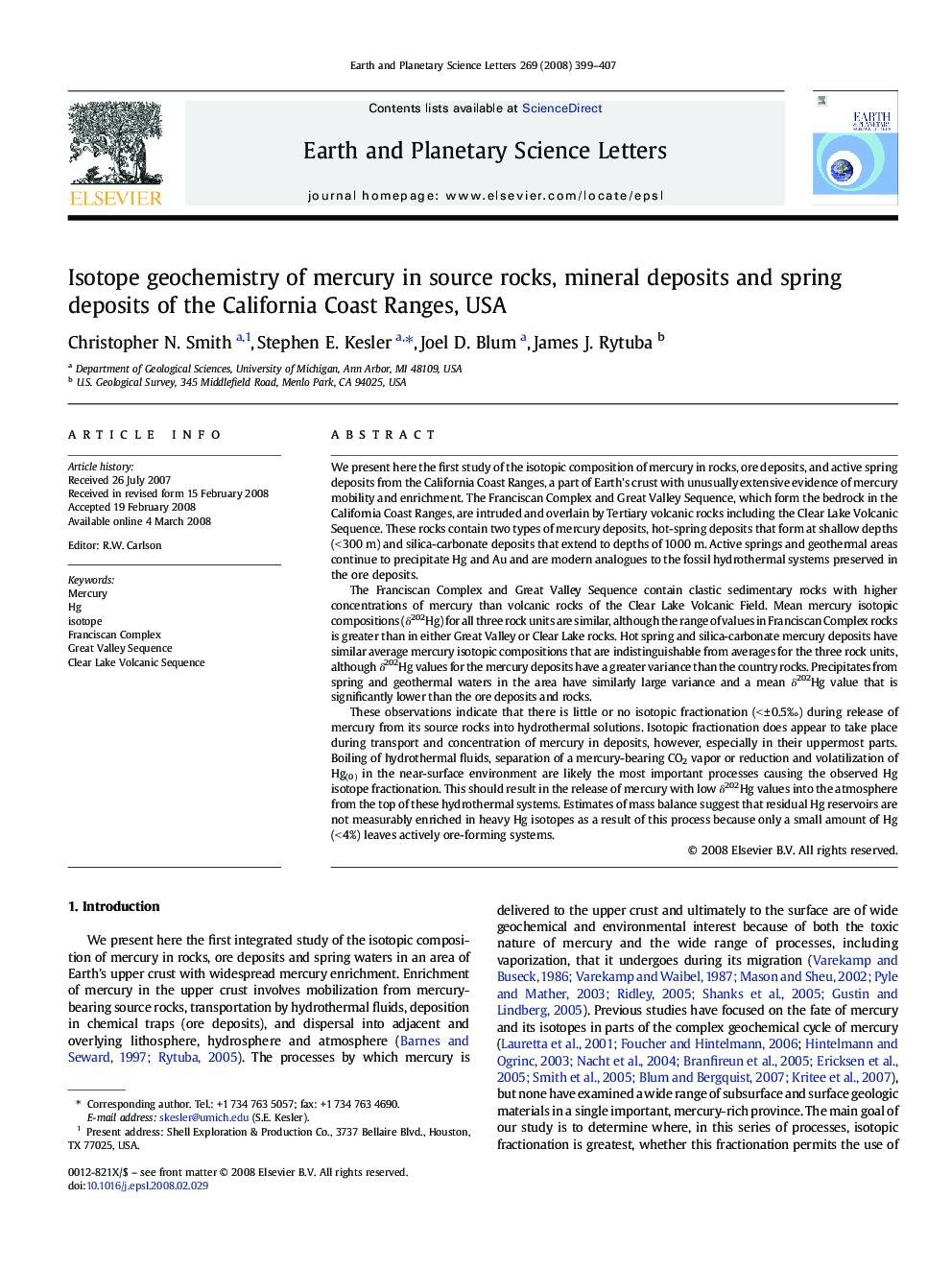| کد مقاله | کد نشریه | سال انتشار | مقاله انگلیسی | نسخه تمام متن |
|---|---|---|---|---|
| 4679778 | 1634896 | 2008 | 9 صفحه PDF | دانلود رایگان |

We present here the first study of the isotopic composition of mercury in rocks, ore deposits, and active spring deposits from the California Coast Ranges, a part of Earth's crust with unusually extensive evidence of mercury mobility and enrichment. The Franciscan Complex and Great Valley Sequence, which form the bedrock in the California Coast Ranges, are intruded and overlain by Tertiary volcanic rocks including the Clear Lake Volcanic Sequence. These rocks contain two types of mercury deposits, hot-spring deposits that form at shallow depths (< 300 m) and silica-carbonate deposits that extend to depths of 1000 m. Active springs and geothermal areas continue to precipitate Hg and Au and are modern analogues to the fossil hydrothermal systems preserved in the ore deposits.The Franciscan Complex and Great Valley Sequence contain clastic sedimentary rocks with higher concentrations of mercury than volcanic rocks of the Clear Lake Volcanic Field. Mean mercury isotopic compositions (δ202Hg) for all three rock units are similar, although the range of values in Franciscan Complex rocks is greater than in either Great Valley or Clear Lake rocks. Hot spring and silica-carbonate mercury deposits have similar average mercury isotopic compositions that are indistinguishable from averages for the three rock units, although δ202Hg values for the mercury deposits have a greater variance than the country rocks. Precipitates from spring and geothermal waters in the area have similarly large variance and a mean δ202Hg value that is significantly lower than the ore deposits and rocks.These observations indicate that there is little or no isotopic fractionation (< ± 0.5‰) during release of mercury from its source rocks into hydrothermal solutions. Isotopic fractionation does appear to take place during transport and concentration of mercury in deposits, however, especially in their uppermost parts. Boiling of hydrothermal fluids, separation of a mercury-bearing CO2 vapor or reduction and volatilization of Hg(0) in the near-surface environment are likely the most important processes causing the observed Hg isotope fractionation. This should result in the release of mercury with low δ202Hg values into the atmosphere from the top of these hydrothermal systems. Estimates of mass balance suggest that residual Hg reservoirs are not measurably enriched in heavy Hg isotopes as a result of this process because only a small amount of Hg (< 4%) leaves actively ore-forming systems.
Journal: Earth and Planetary Science Letters - Volume 269, Issues 3–4, 30 May 2008, Pages 399–407